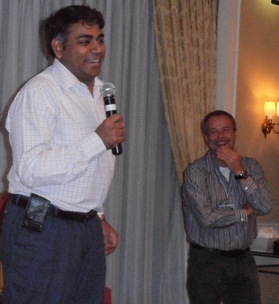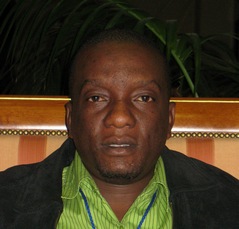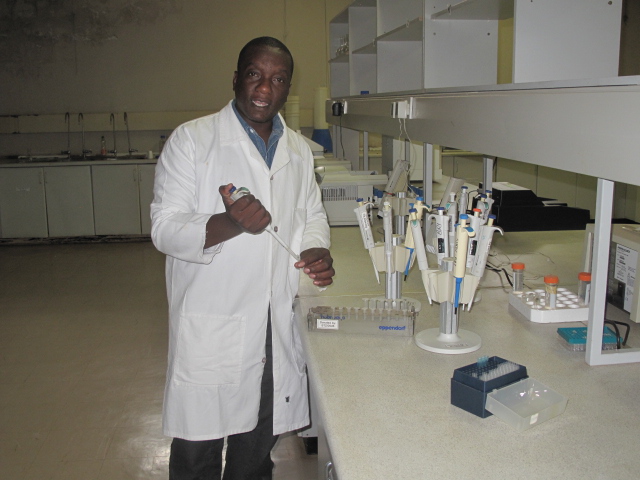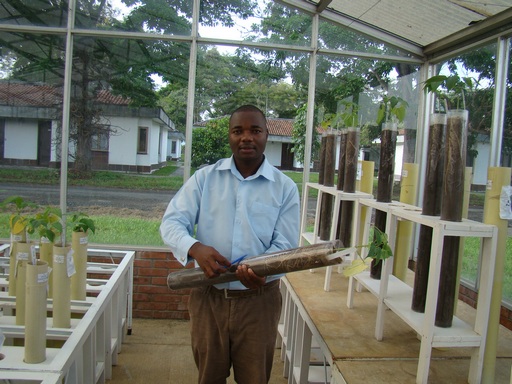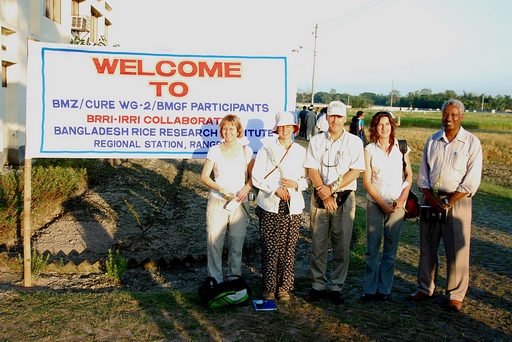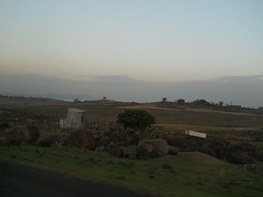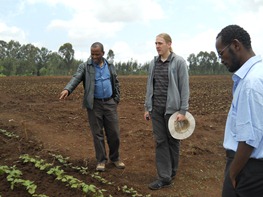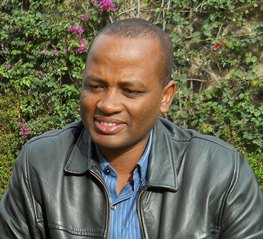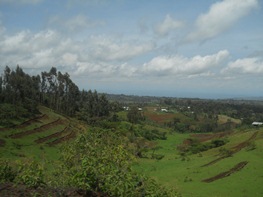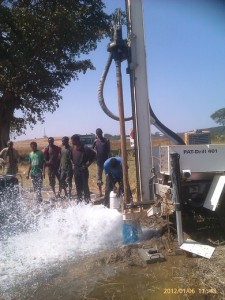The focus of GCP’s work – using genetic diversity and advanced plant science to improve crops for greater food security in the developing world, with a particular focus on drought-prone and harsh environments – seemed to resonate well in the research for development community during 2013, with a number of international events and publications turning the spotlight on drought and its effects on agriculture.
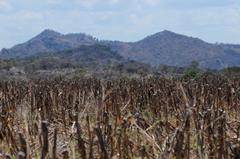
Field under drought duress
In our GCP corner, it all began in March, when GCP Director, Jean-Marcel Ribaut, began the year’s drought discourse with a talk entitled ‘Understanding drought tolerance to best breed for it: how far do we go?’ which he presented at the 49th Annual Illinois Corn Breeders’ School in Champaign, Illinois from 4–5 March.

Keynote concentration on crops & drought worldwide: Jean-Marcel Ribaut’s presentation at InterDrought IV
Early September started with a ‘Harvest Festival’ of drought pickings, beginning with the InterDrought IV conference in Perth, Australia, from 2nd to 6th of the month. This conference, in addition to being partly sponsored by GCP, had Jean-Marcel presenting the keynote address, which explored the complexities of climate change on crop productivity, and delved deep into drought – a ‘complex and capricious’ creature, before considering the many facets of breeding for drought tolerance (see it all on SlideShare).
Late September continued the flavour of the month with the publication of a special issue of Nature tackling ‘Agriculture and Drought’. The article entitled ‘Plant Breeding: discovery in a dry spell’ by Michael Eisenstein poses the question: “Improved crops have helped farmers maintain yields in times of drought. But as climate change looms, will the gains keep coming?” The special issue features, among others, past and present GCP scientists:

Crops coping with cracked earth
- Arvind Kumar (IRRI) ponders the position of drought-tolerant rice and the effects of recent climate change;
- François Tardieu (INRA, France) discusses maize yield in drought-prone conditions; he is the author of the chapter Assessing effects of water deficit in GCP’s publication Drought phenotyping in crops: from theory to practice (an open-access book published in 2011);
- Rajeev K Varshney (ICRISAT), GCP’s Theme Leader for Genomics until August this year, illustrates the effects of molecular breeding on legumes, in particular marker-assisted selection and quantitative trait loci for drought-tolerance related traits;
- Jose Luis Araus Ortega (University of Barcelona, Spain), digs into the disparity between people with biotech and field experience in the area; (he is co-author of the chapter Phenotyping maize for adaptation to drought in GCP’s phenotyping publication);
- GCP itself is mentioned in the article as an example of a project which helps build local capacity in the developing world in order to maximise on advances in crop technology.
Just one day after the publication of the Agriculture & Drought special issue mentioned above, GCP’s General Research Meeting began, running from 27–30 September in Lisbon, Portugal. The focus of this year’s meeting was also on drought from day 1: setting the tone was the keynote address by GCP’s Product Delivery Coordinator for wheat, Richard Trethowan (University of Sydney, Australia) entitled Delivering drought tolerance to those who need it; from genetic resource to cultivar. More on GRM13
In keeping with the drought theme, we had on offer to GRM participants our 2011 open access book, Drought phenotyping in crops: from theory to practice. We also shared copies of chapters which had been republished by Frontiers. Republishing this work gave contributing authors an opportunity to refresh and update their findings, and to bring state-of-the-art research in phenotyping to the public once more via open access publishing, with each author moving at their own pace. Republished chapters will be compiled into an open-access e-book coming soon.
The closing chapter to this current chronicle on drought dialogues is a success story, by GCP Principal Investigators, Emmanuel Okogbenin (NRCRI, Nigeria), Chiedozie Egesi (NRCRI, Nigeria), and collaborator Martin Fregene (Donald Danforth Plant Science Center), which appears in a new FAO book, Biotechnologies at Work for Smallholders: Case Studies from Developing Countries in Crops, Livestock and Fish. The team’s GCP work on cassava is in chapter 2.4, entitled Molecular markers and tissue culture: technologies transcending continental barriers to add value and improve productivity of cassava in Africa, which describes the many hurdles they have successfully overcome to breed high-yield, disease-resistant, drought-tolerant cassava for breeding programmes in Nigeria. Going beyond drought, the chapter dwells on disease and other drawbacks – aspects also touched upon in this lively profile of Chiedozie Egesi. For in a narrative high and heavy on the devastation of drought and disease, it’s important not to lose sight of the gains, and also important to celebrate the good news despite the bad.

Cassava leaf waving woes away
Our balanced but upbeat cassava tale today has deep roots in the past. Check this out in these links:
- Disease-resistant cassava released in Nigeria
- A cross-continental coalition on cassava for Africa
- Collective action to boost cassava yields in Africa
- Breeders in formation
- East to West: Country perspectives on cassava in Africa
- New shoots of a green revolution in Africa: Disease-resistant cassava varieties put down roots in Tanzania
- GCP work in cassava brings state-of-the-art technologies to Africa
- GCP capacity building: Finding the champions














